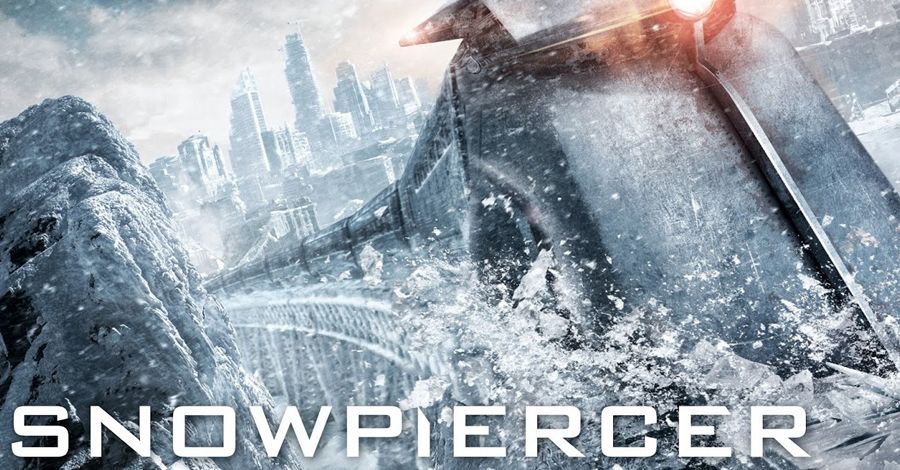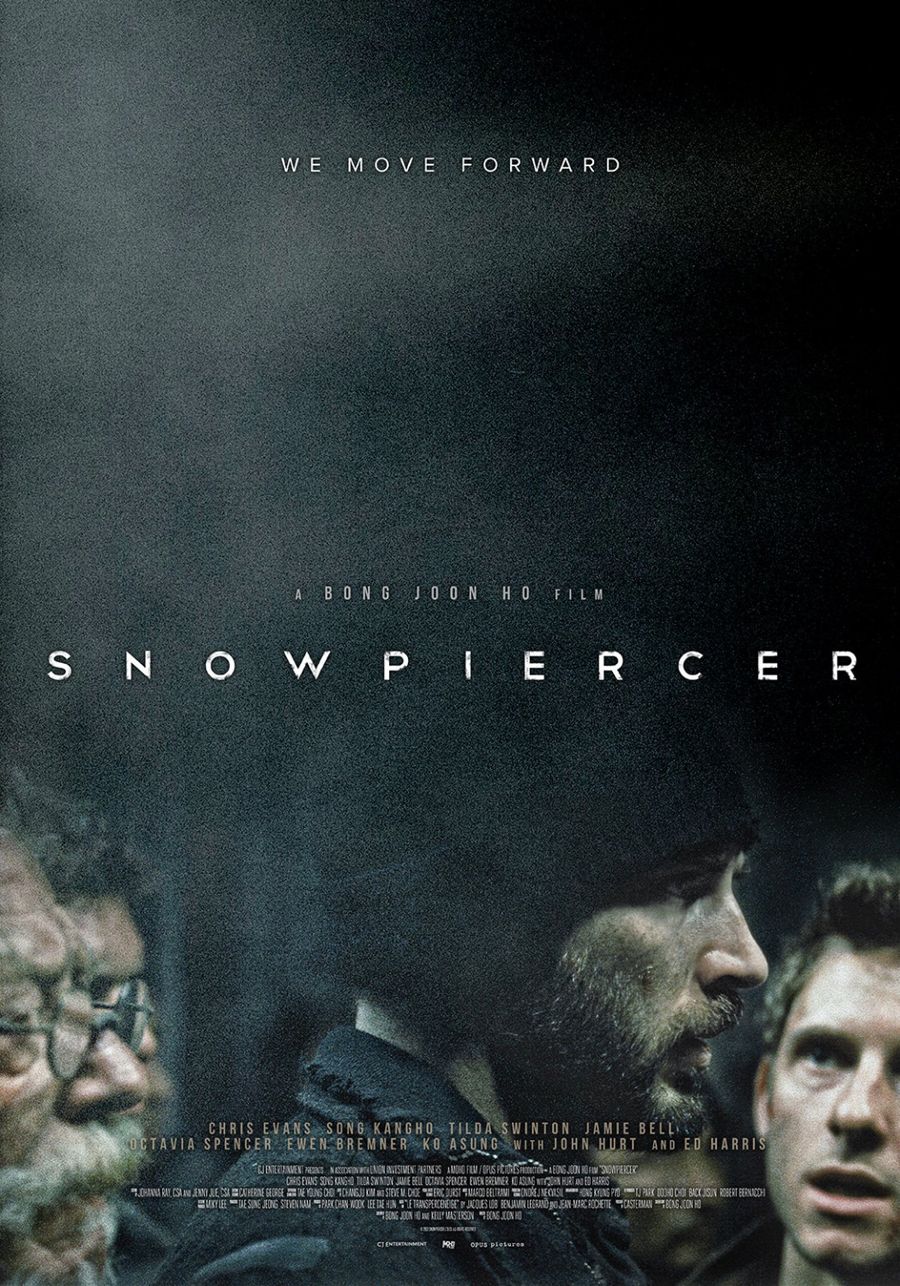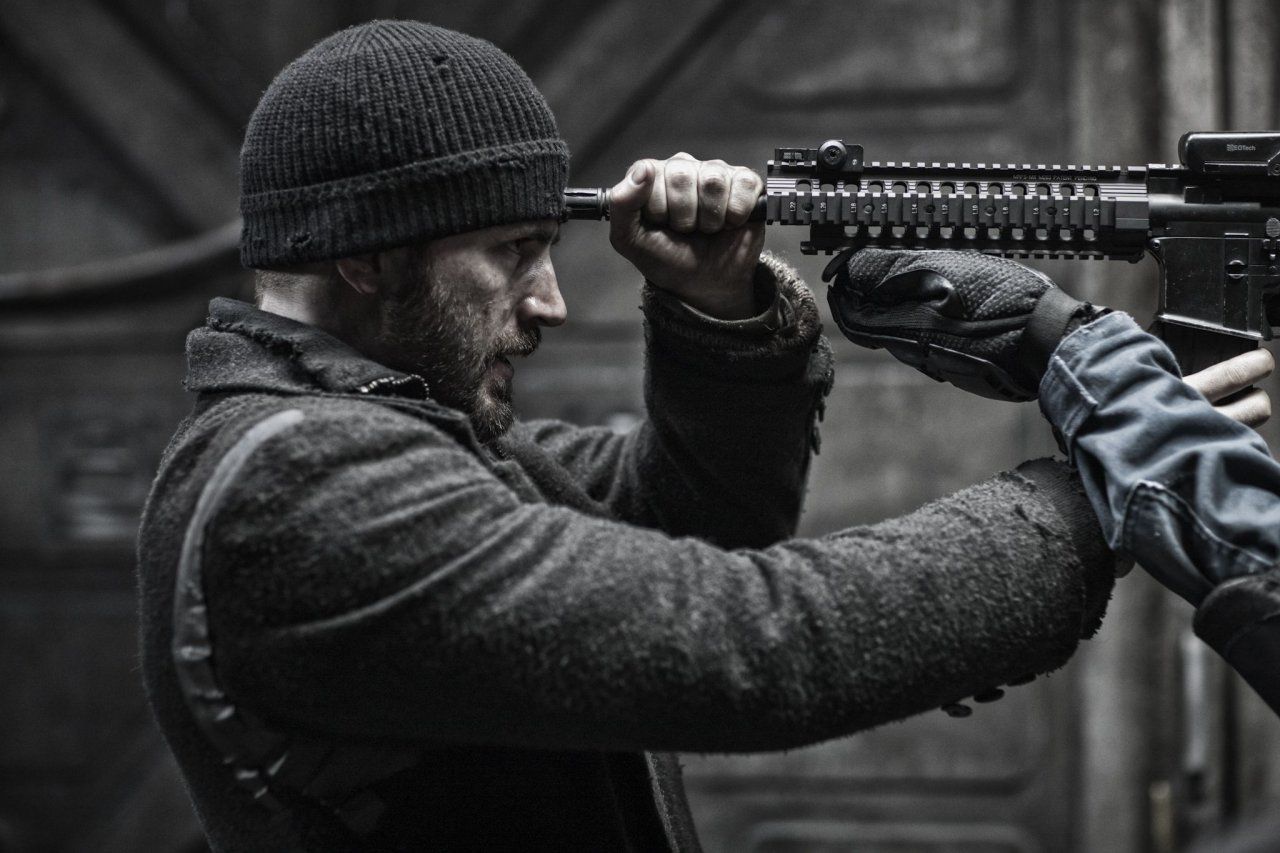"Snowpiercer" takes a different track than your usual science fiction -- appropriately, since its story is set exclusively on a train -- and that's just was acclaimed South Korean filmmaker Bong Joon-ho wanted for his first stab at a Hollywood-style movie.
Based on the French graphic novel "Le Transperceneige" by Jacques Lob, Benjamin Legrand and Jean-Marc Rochette, the film is set in a post-cataclysmic future in which attempts to circumvent global warming went awry, plunging the world into a new Ice Age. Nearly two decades later, the last surviving members of humanity have been living aboard a hermitically sealed perpetual motion locomotive that spends each year circling the globe, with each car containing a separate social strata -- until the disenfranchised, downtrodden, abused rabble forced to occupy the very rear decide to overthrow their oppressors and make their way to the head of the train.
Screenwriter Kelly Masterson Goes Full Throttle with Chris Evans in "Snowpiercer"
Along with a fresh, one-of-a-kind premise rife with action, intrigue and social commentary, Director Bong Korea -- widely considered the most exciting and original filmmaker to emerge from South Korea after such visionary films as "The Host" and "Mother" -- assembled a stellar cast that includes Chris Evans as the freedom fighter struggling with his leadership role and a dark past, Jamie Bell as his impetuous second in command, Tilda Swinton as an imperious, sadistic bureaucrat, John Hurt as the wise heart and soul of the revolution, Octavia Spencer as a mother desperate to learn the fate of her stolen child, Korean actors Song Kang-ho and Go Ah-sung as a tech-savvy father and daughter both addicted to a mind-numbing drug, and Ed Harris as the enigmatic inventor of the train itself.
"He is such a great visionary," says "Snowpiercer" screenwriter Kelly Masterson (Killing Kennedy), who collaborated with Bong on the script. "He has such wonderful images. He tells stories in pictures and he describes those images to me; I tell stories in words and narrative and character arcs. We had different vocabularies and learned to needed to talk to each other, and that was very challenging but ultimately very rewarding -- I know that he made me a better writer." Masterson still marvels at Bong's visual inventiveness praising his rich detailed action sequences. "Some of those fight scenes, they're ballets, they're stories, they're little one-act plays within a movie that are told completely without words."
Spinoff Online: Tell me about the discovery of the source material, the graphic novel, and what it sparked in you to build it out into this very unique film?
Bong Joon-ho: Actually, the original French graphic novel has a great political/social comment in the background, but the very first thing I was fascinated by is the train, the moving train, and a lot of people inside that. The physical limitations or conventions excited me -- the thought of shooting a two-hour movie all inside of a moving train was really thrilling. The other aspect was the last remaining survivors: Instead of helping each other inside that environment, they're fighting each other. It felt very human and an interesting aspect to tackle. And you can only tell this type of story on a train -- a train movie, it has its own sort of visual excitement about it. Personally, I always loved very dark and very narrow, long, cinematic space. For example, the sewer in "The Host," the tunnel in "Memories of Murder," but this is a train. All narrow and very long space -- it makes me crazy! [Laughs] So when I first discovered the comic book and the story, I decided immediately to make this into a film.
RELATED: Lob, Legrand & Rochette's "Snowpiercer" Arrives in America
The train contains a great microcosm of different social strata, obviously. What were the ideas and the things that you wanted to really communicate through this science fiction premise?
When you think of sci-fi, there's of course the spectacle, or you see things that you don't really see in real life, whether it's like a very special weapon or it all takes place in the future. It shows us things that we don't see in everyday life. It takes place in the future, but it's actually an opportunity to talk about us today, sort of like a mirror of how we live our life now; that's kind of the essence. With this film, the survivors on a moving train, it sounds like sort of a far, distant kind of an idea. But it's really just a way of talking about how we live and just the collision of humans in a small space, and the class struggles that arise from it. It's a very universal concept. From the audience's point of view, if I was on the train, which section would I be in? You could think like that.
This project had a bigger budget than you've worked with in the past. What are the pros and the cons of all those toys at your disposal?
I hate big budget movies! [Laughs] I'm going to make small, smaller, smaller budget but more deep and very detailed movies. That's my test. But everything is very relative. It's strange, but for me, personally, this is a huge budget movie -- also, this is the biggest budget movie ever made in South Korea. But, for example, Chris Evans on a TV talk show said, "Oh, now, I'm doing movie called 'Snowpiercer.' It's a very small, but unique, movie." He said it like that! So this movie is kind of like a dual, two different identities. I love small budget movie, like a mother.
Chris is the actor who's the through-line for everybody to follow in the film -- he's become both a great leading man and a great character actor. Tell me about having him be the center of your story, working with him to bring your protagonist Curtis to life.
With Chris, I felt that he was appropriate for this character, and right. Of course, there's the Captain America movies, which were great, but in between those Marvel movies, he also did a lot of smaller, independent movies where he plays darker and more sensitive characters, like Danny Boyle's "Sunshine," a movie called "Puncture." Chris is appropriate for Curtis in that, on the one hand, he plays like a muscular hero type, but he also has a darker, sensitive side. Chris did a lot of preparation for the role, like the long monologue that he has where he talks about his dark past, 17 years ago on a train -- that was a really key scene for him, and he really prepped a lot and had many discussions with me. During the shooting, in my place in Prague, we were watching together that famous, long dialogue sequence of Steven Spielberg's "Jaws," when the shark attacks. We saw it together. I said, "I'm just going to shoot you. It's a closeup. You don't see the flashback. You don't intercut. It's just going to be just your face."
Were you surprised with how smoothly everything went with such an international cast and crew?
In terms of the cast, I feel really lucky -- there's so many actors in this movie -- that there weren't any accidents or problems with fights. It was quite a harmonious set. And just so many numbers of great actors, Chris Evans, Tilda Swinton, Ed Harris, John Hurt, Octavia Spencer, Jamie Bell, Luke Pasqualino, Alison Pill, Vlad Ivanov, the Romanian actor, [Laughs] It's crazy. I just feel really lucky.
When it came to visualizing the world -- both the environment and how you were going to shoot it -- what were some of your influences, either from cinema or from art or architecture, etc.?
Since it's a train movie, I saw a lot of the old classics. Like John Frankenheimer's "The Train," and I also saw the Japanese comic book, "Galaxy Express 999." But in fact, it didn't really help. This movie is a very unique and different type of a train movie, so I also rode a real train in Korea. I'd ride the subways and look out the window and see movement, just those physical things. That actually, ended up being more helpful.
In terms of the characters, [they're] totally different from the graphic novel. Everything comes from the train -- the structure of the train, which character is in what part of the train. Gilliam is at the end of the train. Wilford is in the front of the train. Curtis is trying to get to the front. Nam is trying to go outside. Everything that sort of happened was sort of constructed from the physicality of the train and what needed to happen.
How did you push yourself on this movie? What was the creative challenge that you had to rise too?
Inside, I always had this sort of kind of cheesy slogan. [Laughs] I wanted to make the ultimate train movie, that other directors wouldn't dare to want to make a movie about a train. Just to show everything you can on a train. Very childish! [Laughs] The end-all, be-all. That's why I pushed myself to get through it.



